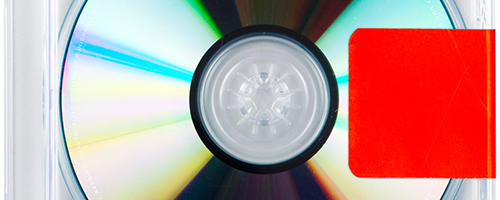The seventh generation
Remember the sixth generation of gaming? Sony dropped its then-revolutionary PlayStation 2, complete with DVD player, online connectivity and backwards compatibility – the first system to boast such features.
This great array of benefits meant that the long-time champions of the video gaming universe, Nintendo, lost their hold on the market. Nintendo’s major competition, Sega, didn’t have a chance with their DreamCast and folded from the console market entirely. Nintendo eventually entered the fray with their GameCube, though it was ill received and considered a system for kids.
Since then, Microsoft has become a major player in the console wars and the software magnate has already released their seventh-generation system, the Xbox 360, which has done reasonably well. Sony and Nintendo are mere weeks away from joining the seventh-generation fray, releasing the PlayStation 3 and Wii, respectively. As the waiting period dwindles, many gamers have expressed their enthusiasm about both systems – systems that boast full online capability and backwards compatibility.
The Wii is set to launch on Nov. 19 in the U.S. It’s the first Nintendo system that will be available to American gamers before the rest of the world, and will carry a decent line of games (27 are confirmed so far) available at the time of launch. It’s also been considered a do-or-die system for Nintendo, as the GameCube still falls third in worldwide sales to its sixth-gen counterparts. If the Wii is as underwhelming as that, Nintendo is likely to follow Sega’s example and become a software-only publisher.
Nintendo is keeping with its long history of developing cartridges exclusive to its console, a potentially harmful idea. It will play GameCube games, but once again, Nintendo has declined to include a DVD player. This does come with the benefit of a low $250 price, easily the lowest among the seventh generation (and even lower than the $300 launches of the PS2 and Xbox during the sixth-gen console war). The controller is also raising some questions, given that it’s – a remote?
Yes, the goofy little “Wii Remote” doesn’t appear to offer much control over the in-game happenings, given that it only has a few menu navigation buttons, a digital directional keypad and two multi-use buttons at the bottom. Fret not, however: the wireless remote (which connects to the Wii via Bluetooth) is also a motion sensor, meaning that where you move the remote is where you would point a gun, swing a racket, turn your steering wheel or any other number of in-game features. Similarly, there is an add-on called the “Nunchuk” that sports two shoulder buttons and an analog d-pad. The remote is meant to reflect the “Wii Channel” system used to navigate between online features, memory card management and actual gameplay. There’s even a channel that allows gamers to create personal avatars from a KidPix-like menu.
And for those who are just plain uninterested, Nintendo has included support for a classic controller from the GameCube.
Sony is preparing to release the PS3 to America on Nov. 17, one week after the Japanese launch. Sony is still enjoying success with the PS2 – current sales figures actually show the PS2 as leading in game sales for the past year, despite the Xbox 360 being available since last Thanksgiving – and is anticipating similar victory with the forthcoming PS3.
This will be the first console to support Blu-Ray discs, letting programmers publish games with ridiculous amounts of disc space – which means better graphics, longer stories, shorter load times and (for sports games) huge libraries of statistics. Similar to the Wii, the controller will support motion-sensitivity, though it will lack a rumble feature. The PlayStation Portable is also going to have connectivity to the system for use with in-game features, external memory and a downloader for PlayStation One titles via the Sony-supported PS1 Emulator (!!!) being released alongside the PS3.
The launch library for the PS3 is around 20 games, with over 30 major titles confirmed to release by the end of 2006. Some familiar franchises will make their debut with the PS3, including Metal Gear Solid 4, Final Fantasy XIII and Grand Theft Auto IV, and are expected to assure Sony’s supremacy in the console wars. Similarly, the PS3 is branching out from its predecessors by making a publicly available development kit that can be utilized by anyone who has the time and talent required to create their own games and will also allow for support from GNU programming. Sony will offer an in-house “PlayStation Network” for broadband connectivity, a system similar to Xbox Live that connects players from the PS3 to others worldwide.
All of these features will mean a huge drawback, however: the basic system will cost a cool $500, with a price drop not projected until summer 2007. The premium system, which will include built-in WiFi, a 60GB hard drive and multiple flash readers, will retail for a hefty $600 – a good $200 higher than the current premium Xbox 360. Also, each of the other seventh-gen systems feature a plethora of add-on accessories like cameras and driving wheels; Sony has decided to wait until the PS3’s library grows a bit before they begin producing the bells and whistles themselves, trusting in third-party developers until then.
The rest of 2006 promises to be an intense time for gamers: hip, mainstream gamers will make home accessories and enjoy over-the-top celebrity endorsements of the new systems, while gaming geeks will have so many new games and features that the rest of the year will pass in a blur of blissful antisocialism.
The seventh generation of gaming is going to a full-on melee of cutting-edge technology, top-notch games and constant upgrades from each developer. If you’re already asking which system to buy, there’s no clear victor in the pack: each of these new-age contenders have sterling appeal and boast dozens of reasons to buy them. You have a hard decision ahead of you. The only sure thing is that the gaming community is on the brink of evolution, and I can’t be alone in my enthusiasm for all things to come.




